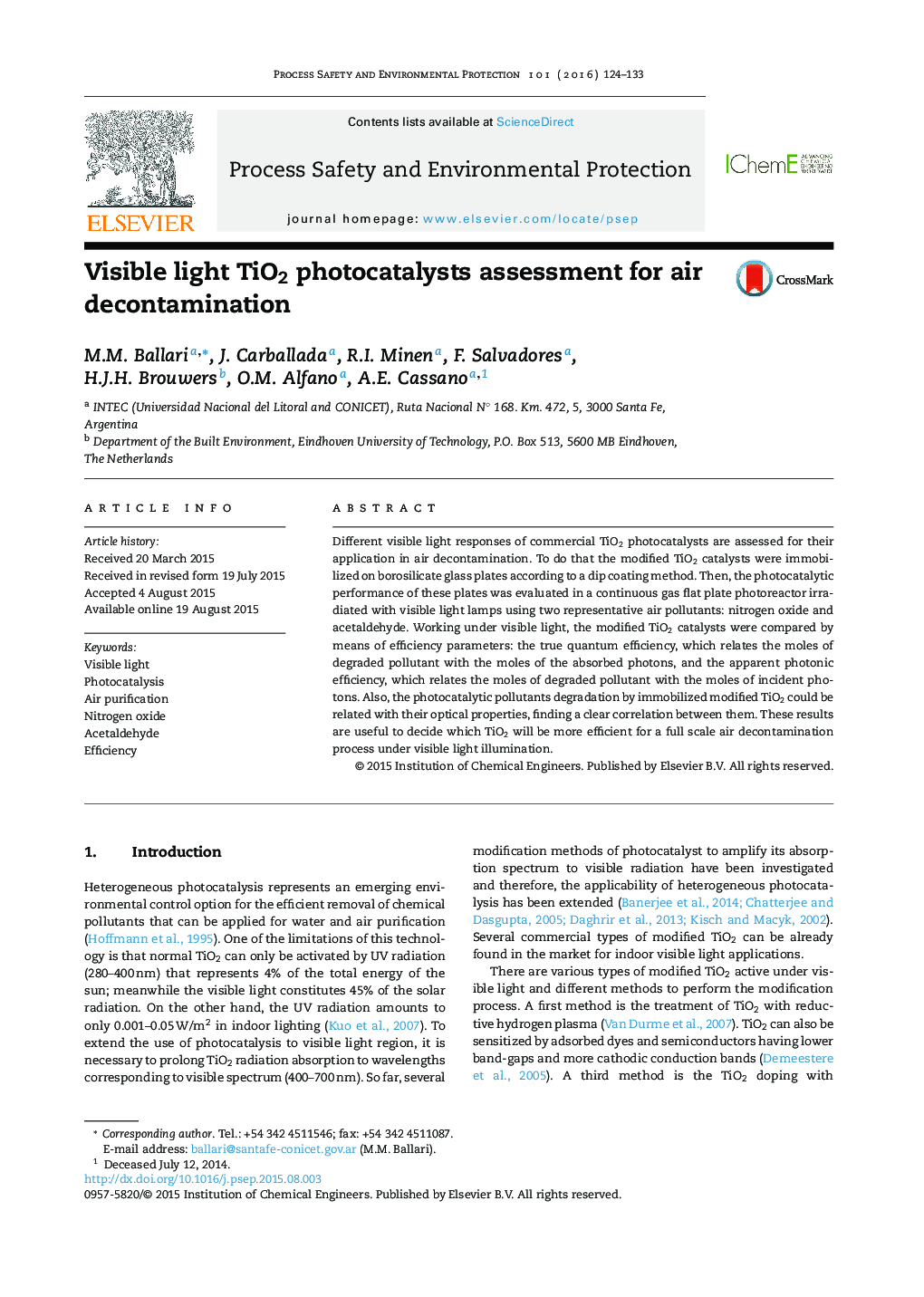| Article ID | Journal | Published Year | Pages | File Type |
|---|---|---|---|---|
| 588150 | Process Safety and Environmental Protection | 2016 | 10 Pages |
•Different modified TiO2 are assessed under visible light.•Two representative air pollutants, nitrogen oxide and acetaldehyde, are tested.•The optical properties of TiO2 coatings are determined.•The photocatalysts are compared by means of photonic and quantum efficiencies.
Different visible light responses of commercial TiO2 photocatalysts are assessed for their application in air decontamination. To do that the modified TiO2 catalysts were immobilized on borosilicate glass plates according to a dip coating method. Then, the photocatalytic performance of these plates was evaluated in a continuous gas flat plate photoreactor irradiated with visible light lamps using two representative air pollutants: nitrogen oxide and acetaldehyde. Working under visible light, the modified TiO2 catalysts were compared by means of efficiency parameters: the true quantum efficiency, which relates the moles of degraded pollutant with the moles of the absorbed photons, and the apparent photonic efficiency, which relates the moles of degraded pollutant with the moles of incident photons. Also, the photocatalytic pollutants degradation by immobilized modified TiO2 could be related with their optical properties, finding a clear correlation between them. These results are useful to decide which TiO2 will be more efficient for a full scale air decontamination process under visible light illumination.
